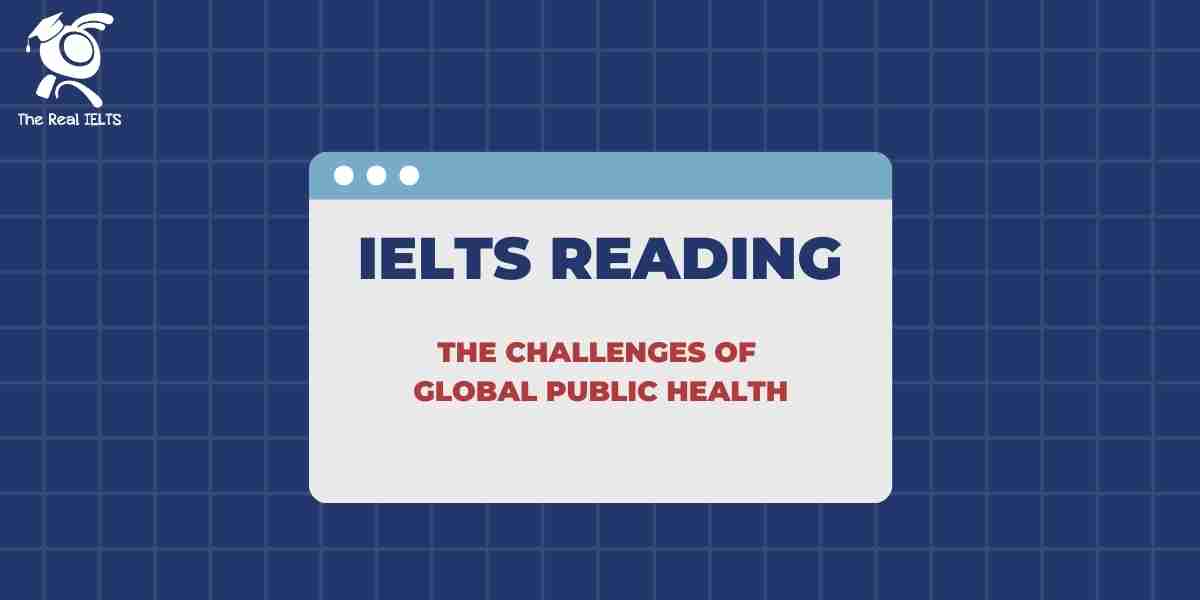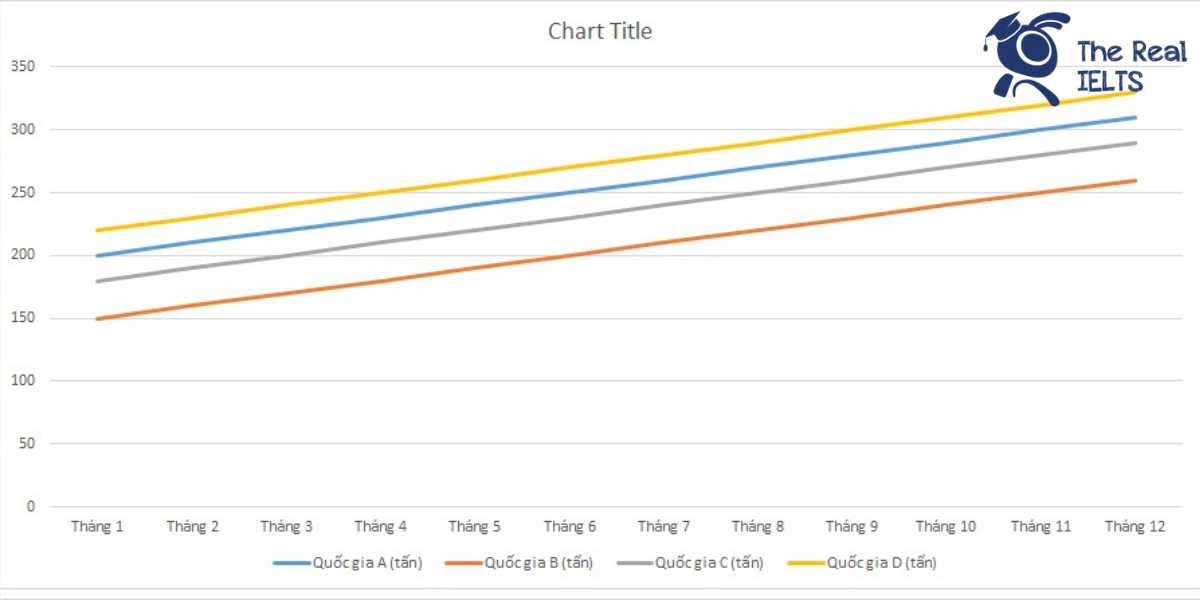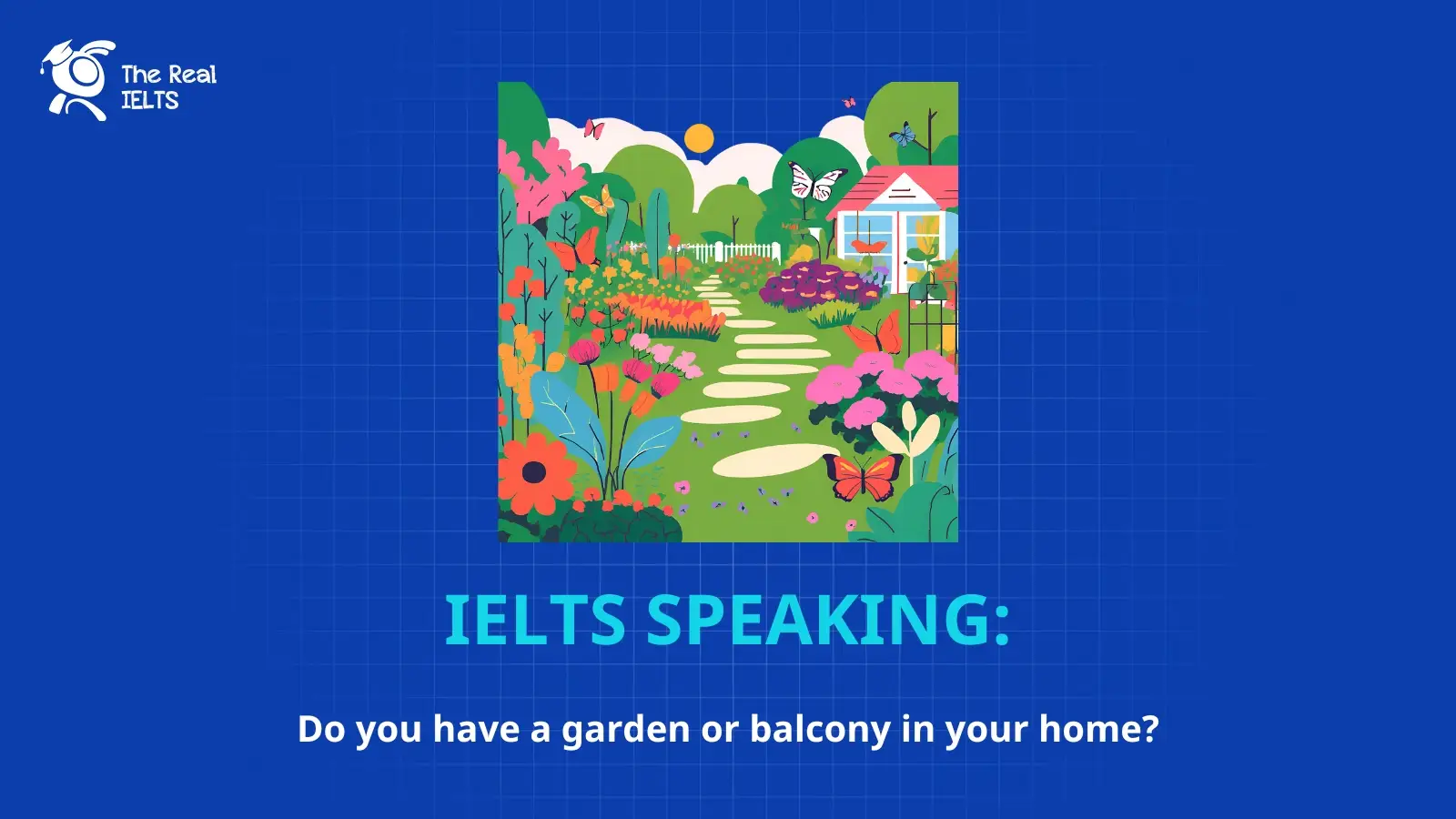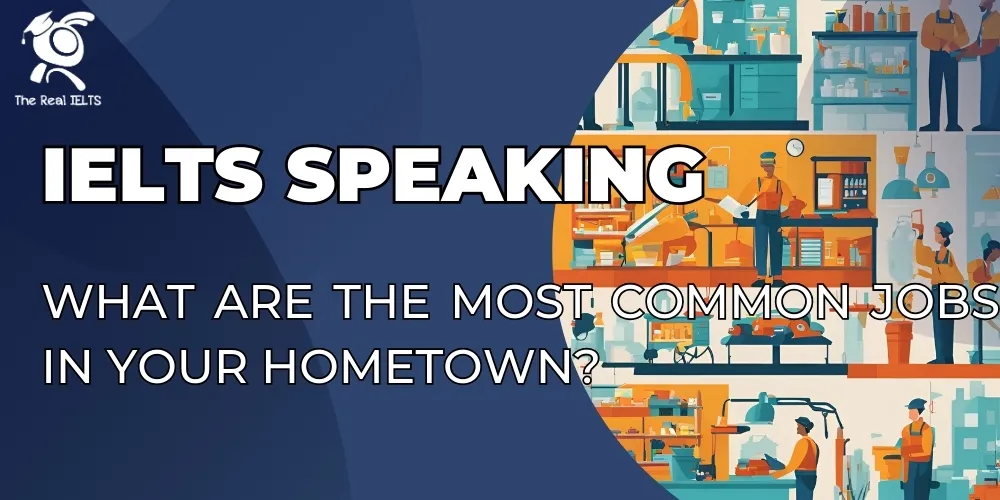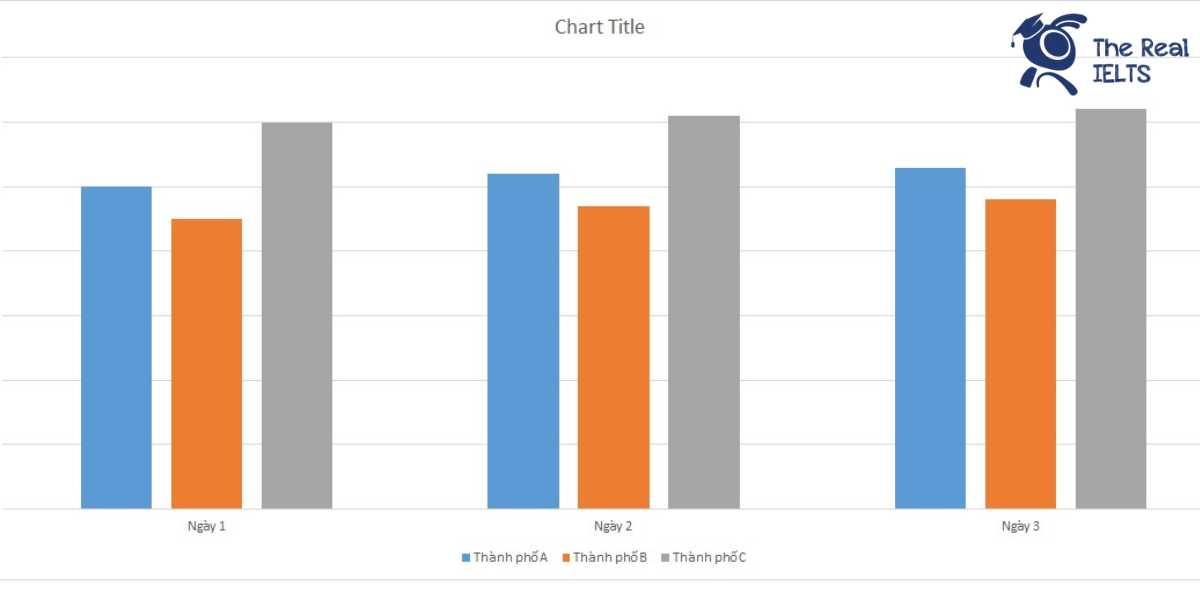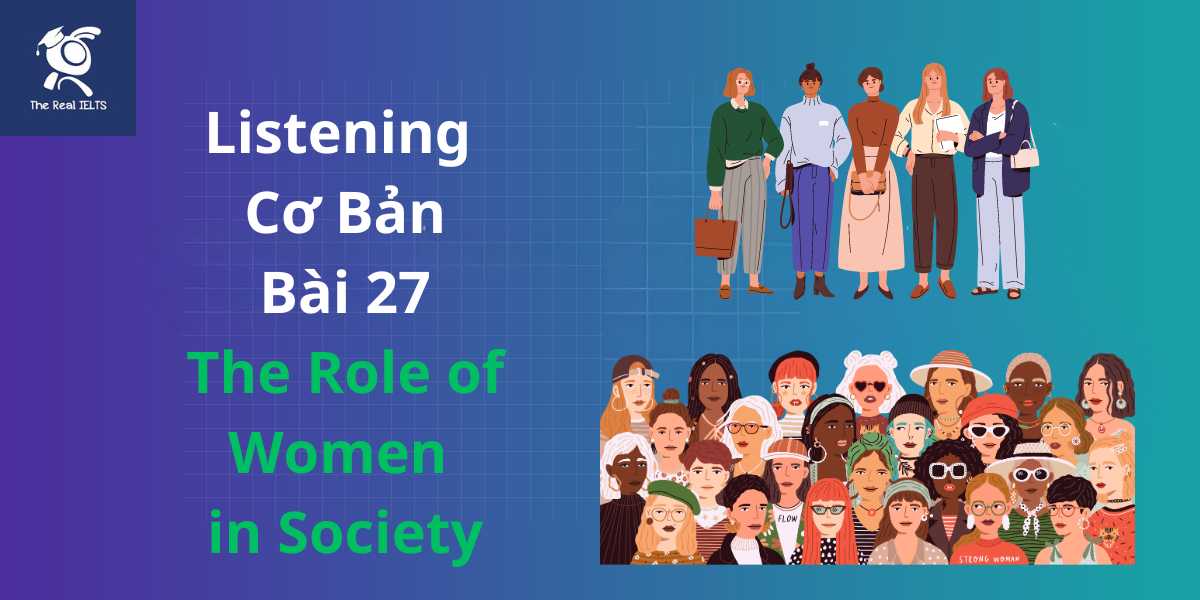Đề thi IELTS Reading có tiêu đề “The Challenges of Global Public Health”
Nhớ đọc thêm các bài luyện thi IELTS nhé.
IELTS Reading:”The Challenges of Global Public Health“
The Challenges of Global Public Health
Global public health faces numerous challenges in the 21st century, as health issues transcend national boundaries, requiring coordinated international efforts to address them effectively. Despite advances in medical science and technology, these challenges remain multifaceted, encompassing socio-economic, political, environmental, and cultural dimensions. This essay will explore the key challenges facing global public health today, highlighting the complexity and interconnectedness of these issues.
One of the most significant challenges in global public health is the growing burden of non-communicable diseases (NCDs), such as heart disease, cancer, diabetes, and respiratory conditions. These diseases, once considered problems primarily for high-income countries, have become increasingly prevalent in low- and middle-income countries. The World Health Organization (WHO) estimates that NCDs account for 71% of all deaths worldwide, with over 85% of these “premature” deaths occurring in low- and middle-income countries. This shift is driven by changes in lifestyle, including poor diet, lack of physical activity, tobacco use, and alcohol consumption. Addressing NCDs requires a multi-pronged approach that includes promoting healthy lifestyles, improving access to quality healthcare, and implementing policies that reduce the risk factors associated with these diseases.
Another pressing challenge is the ongoing threat of infectious diseases. Despite the progress made in reducing the burden of infectious diseases through vaccination, improved sanitation, and better access to healthcare, new infectious diseases continue to emerge, and old ones are re-emerging in more virulent forms. The COVID-19 pandemic, which began in late 2019, is a stark reminder of the devastating impact that infectious diseases can have on global health, economies, and societies. The pandemic has exposed weaknesses in public health systems worldwide and underscored the need for robust global health surveillance, early detection systems, and international cooperation to prevent and control outbreaks. Furthermore, the rise of antimicrobial resistance (AMR) poses a significant threat to global health. The misuse and overuse of antibiotics in humans, animals, and agriculture have led to the emergence of drug-resistant bacteria, making infections harder to treat and increasing the risk of disease spread, severe illness, and death.
The challenges of global public health are further compounded by environmental factors. Climate change, for instance, has a profound impact on health, contributing to the spread of vector-borne diseases, increasing the frequency and severity of natural disasters, and exacerbating food and water insecurity. Rising temperatures and changing precipitation patterns have expanded the geographical range of diseases like malaria and dengue fever, placing more populations at risk. Additionally, extreme weather events, such as hurricanes, floods, and droughts, disrupt healthcare infrastructure, displace communities, and create conditions that facilitate the spread of diseases. Addressing the health impacts of climate change requires a comprehensive approach that integrates health considerations into climate policies and ensures that health systems are resilient to the effects of climate change.
Socio-economic inequalities also play a critical role in shaping global public health outcomes. Access to healthcare remains highly unequal, both within and between countries. In many low- and middle-income countries, large segments of the population lack access to essential health services, including maternal and child healthcare, immunizations, and treatment for chronic conditions. This disparity is often driven by poverty, lack of education, and social exclusion, which limit individuals’ ability to seek and receive healthcare. Moreover, health systems in many countries are underfunded and understaffed, leading to poor-quality care and unmet health needs. Bridging the gap in healthcare access requires investments in health infrastructure, workforce development, and policies that address the social determinants of health.
Another critical challenge is the need for effective health governance at both the national and global levels. Strong health systems are essential for ensuring that populations receive the care they need, but building and maintaining these systems requires effective governance. This includes ensuring that health policies are evidence-based, that resources are allocated efficiently and equitably, and that health systems are accountable to the populations they serve. At the global level, health governance involves coordinating international efforts to address cross-border health issues, such as pandemics, AMR, and climate change. However, achieving effective global health governance is often hindered by geopolitical tensions, competing national interests, and inadequate funding for global health initiatives.
Cultural factors also influence global public health, particularly in terms of health behaviors and the acceptance of medical interventions. Cultural beliefs and practices can shape individuals’ perceptions of health and illness, influencing their willingness to seek care or adhere to treatment. For example, in some cultures, there may be stigma associated with certain diseases, such as HIV/AIDS, which can prevent individuals from seeking diagnosis and treatment. Additionally, cultural resistance to vaccination has contributed to the resurgence of vaccine-preventable diseases, such as measles, in some parts of the world. Addressing these cultural challenges requires culturally sensitive health promotion and education strategies that engage communities and respect their beliefs while promoting evidence-based health practices.
In conclusion, the challenges of global public health are complex and interconnected, requiring coordinated efforts at local, national, and global levels. Addressing these challenges requires a holistic approach that considers the diverse factors influencing health, including non-communicable and infectious diseases, environmental changes, socio-economic inequalities, governance, and cultural influences. By strengthening health systems, promoting health equity, and fostering international cooperation, the global community can work towards improving public health outcomes and achieving the goal of health for all.
Đề bài thi IELTS Reading
Multiple Choice Questions (Câu hỏi trắc nghiệm)
- Which of the following is a major challenge in global public health?
- A) Non-communicable diseases
- B) Rising birth rates
- C) Declining life expectancy
- D) Improved sanitation
- What percentage of all deaths worldwide are attributed to non-communicable diseases?
- A) 61%
- B) 71%
- C) 85%
- D) 90%
- Which lifestyle change is not mentioned as contributing to the rise in non-communicable diseases?
- A) Poor diet
- B) Lack of physical activity
- C) Increased life expectancy
- D) Alcohol consumption
- The COVID-19 pandemic primarily highlighted the need for:
- A) More healthcare workers
- B) Stronger global health surveillance
- C) Better access to sanitation
- D) Increased funding for vaccination programs
- What environmental factor is mentioned as exacerbating food and water insecurity?
- A) Climate change
- B) Deforestation
- C) Urbanization
- D) Pollution
- Which of the following is a cultural factor affecting global public health?
- A) Economic inequality
- B) Stigma associated with diseases
- C) Antibiotic resistance
- D) Global health governance
- What is the main reason for the emergence of antimicrobial resistance (AMR)?
- A) Poor sanitation
- B) Overuse of antibiotics
- C) Climate change
- D) Lack of vaccination
- Which statement about infectious diseases is true?
- A) They are no longer a major global health concern.
- B) Old diseases are re-emerging in more virulent forms.
- C) They are only prevalent in low-income countries.
- D) They are not affected by climate change.
- Effective health governance at the global level is often hindered by:
- A) Lack of resources
- B) Geopolitical tensions
- C) Poor infrastructure
- D) Cultural resistance
- What percentage of “premature” deaths from non-communicable diseases occur in low- and middle-income countries?
- A) 71%
- B) 85%
- C) 90%
- D) 95%
True/False/Not Given Questions
- The majority of non-communicable diseases occur in high-income countries.
- True
- False
- Not Given
- The World Health Organization (WHO) has eliminated the threat of infectious diseases.
- True
- False
- Not Given
- Climate change has reduced the frequency of natural disasters globally.
- True
- False
- Not Given
- Poor diet is the primary cause of all non-communicable diseases.
- True
- False
- Not Given
- The essay suggests that health systems in many countries are overfunded.
- True
- False
- Not Given
- The rise in antimicrobial resistance (AMR) is partly due to the misuse of antibiotics in agriculture.
- True
- False
- Not Given
- The COVID-19 pandemic began in early 2019.
- True
- False
- Not Given
- Cultural factors have no impact on the acceptance of medical interventions.
- True
- False
- Not Given
- Rising temperatures have reduced the geographical range of diseases like malaria.
- True
- False
- Not Given
- Extreme weather events can disrupt healthcare infrastructure.
- True
- False
- Not Given
Yes/No/Not Given Questions
- Does the author believe that global public health challenges require international cooperation?
- Yes
- No
- Not Given
- Does the author suggest that health systems in all countries are adequately funded?
- Yes
- No
- Not Given
- Is it the author’s opinion that socio-economic inequality is a minor issue in global public health?
- Yes
- No
- Not Given
- Does the author believe that cultural resistance is the primary cause of vaccine-preventable diseases?
- Yes
- No
- Not Given
- Does the author state that non-communicable diseases are decreasing globally?
- Yes
- No
- Not Given
- Is it the author’s view that addressing climate change should not be a priority in global public health?
- Yes
- No
- Not Given
Matching Information (Nối thông tin)
- Match the following challenges with the corresponding paragraph numbers:
- A) Non-communicable diseases
- B) Infectious diseases
- C) Environmental factors
- D) Socio-economic inequalities
- Match the following topics with the relevant parts of the text:
- A) Antimicrobial resistance
- B) Climate change and health
- C) Health governance
- D) Cultural factors in public health
Matching Headings (Nối tiêu đề với đoạn văn)
- Choose the correct heading for the paragraph on non-communicable diseases:
- A) The Rise of Lifestyle Diseases
- B) The Impact of Poverty on Health
- C) Addressing Global Pandemics
- D) Health Governance Challenges
- Choose the correct heading for the paragraph on infectious diseases:
- A) Old Diseases Resurging
- B) Climate Change and Health
- C) Global Surveillance Systems
- D) The Role of Vaccination in Public Health
- Choose the correct heading for the paragraph on environmental factors:
- A) The Economic Impact of Health
- B) Climate Change as a Health Threat
- C) Improving Access to Healthcare
- D) Overcoming Cultural Barriers
- Choose the correct heading for the paragraph on socio-economic inequalities:
- A) Bridging the Healthcare Gap
- B) The Role of Education in Health
- C) Challenges of Health Governance
- D) Addressing Climate Change in Healthcare
Matching Features (Nối đặc điểm)
- Match the following features with their corresponding challenges:
- A) Poor diet
- B) Antimicrobial resistance
- C) Extreme weather events
- D) Stigma associated with diseases
- Match the following problems with their underlying causes:
- A) Rising NCDs in low-income countries
- B) Re-emergence of infectious diseases
- C) Disrupted healthcare infrastructure
- D) Cultural resistance to vaccination
Sentence Completion (Hoàn thành câu)
- Non-communicable diseases account for ___% of all deaths worldwide.
- A) 71
- B) 85
- C) 90
- D) 61
- The misuse and overuse of antibiotics have led to the emergence of ___.
- A) Drug-resistant bacteria
- B) New infectious diseases
- C) Improved healthcare systems
- D) Global surveillance systems
- Extreme weather events, such as hurricanes and floods, can disrupt ___.
- A) Vaccination programs
- B) Healthcare infrastructure
- C) Global health governance
- D) Cultural beliefs
- Rising temperatures have expanded the geographical range of diseases like ___.
- A) Malaria
- B) Cancer
- C) Diabetes
- D) Heart disease
Short Answer Questions (Câu hỏi trả lời ngắn)
- What is the main factor driving the rise in non-communicable diseases in low- and middle-income countries?
- What is one key approach suggested to address the health impacts of climate change?
Đáp án bài thi IELTS Reading
Multiple Choice Questions (Câu hỏi trắc nghiệm)
- A) Non-communicable diseases
- B) 71%
- C) Increased life expectancy
- B) Stronger global health surveillance
- A) Climate change
- B) Stigma associated with diseases
- B) Overuse of antibiotics
- B) Old diseases are re-emerging in more virulent forms
- B) Geopolitical tensions
- B) 85%
True/False/Not Given Questions
- False
- False
- False
- False
- False
- True
- False
- False
- False
- True
Yes/No/Not Given Questions
- Yes
- No
- No
- No
- No
- No
Matching Information (Nối thông tin)
- A) Non-communicable diseases – Paragraph 2
- B) Infectious diseases – Paragraph 3
- C) Environmental factors – Paragraph 4
- D) Socio-economic inequalities – Paragraph 5
- A) Antimicrobial resistance – Paragraph 3
- B) Climate change and health – Paragraph 4
- C) Health governance – Paragraph 6
- D) Cultural factors in public health – Paragraph 7
Matching Headings (Nối tiêu đề với đoạn văn)
- A) The Rise of Lifestyle Diseases
- A) Old Diseases Resurging
- B) Climate Change as a Health Threat
- A) Bridging the Healthcare Gap
Matching Features (Nối đặc điểm)
- A) Poor diet – Non-communicable diseases
- B) Antimicrobial resistance – Infectious diseases
- C) Extreme weather events – Environmental factors
- D) Stigma associated with diseases – Cultural factors
- A) Rising NCDs in low-income countries – Changes in lifestyle
- B) Re-emergence of infectious diseases – Antimicrobial resistance
- C) Disrupted healthcare infrastructure – Extreme weather events
- D) Cultural resistance to vaccination – Cultural beliefs and practices
Sentence Completion (Hoàn thành câu)
- A) 71
- A) Drug-resistant bacteria
- B) Healthcare infrastructure
- A) Malaria
Short Answer Questions (Câu hỏi trả lời ngắn)
- Changes in lifestyle, including poor diet, lack of physical activity, tobacco use, and alcohol consumption.
- Integrating health considerations into climate policies and ensuring that health systems are resilient to the effects of climate change.
Luyện tập bài khác ở bài viết:”100 bài luyện IELTS Reading 2024 – 2025“


